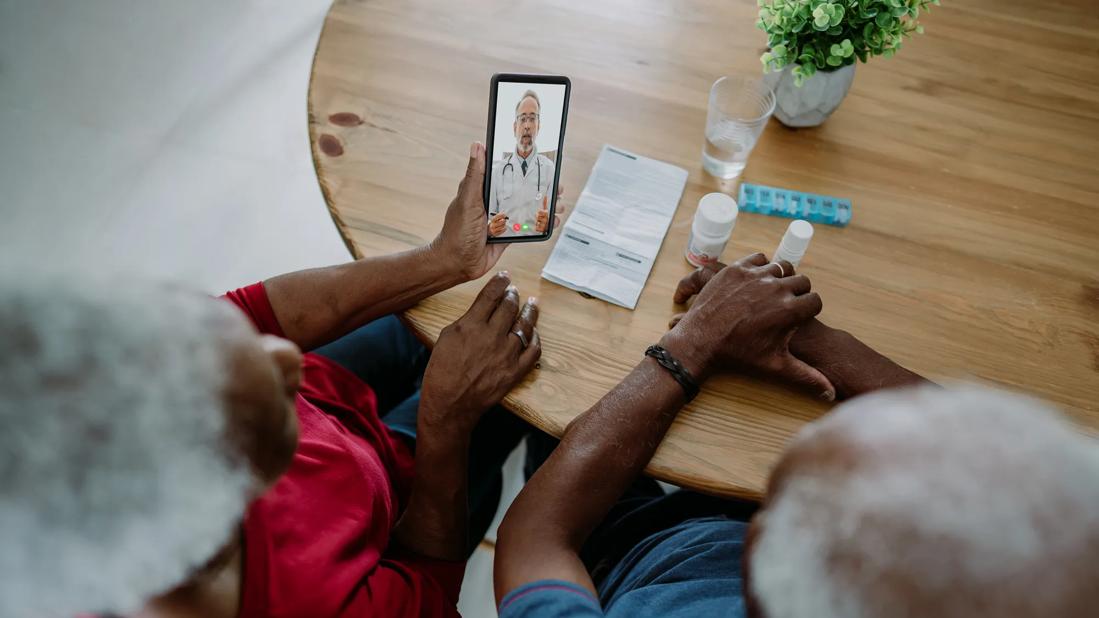Making consultations and follow-up care convenient

Using telehealth to provide care is No. 5 on Cleveland Clinic’s list of the top 10 medical innovations for 2018, and with good reason: the service is booming, with 7 million patients nationwide expected to use telehealth in 2018. Distance Health is part of an initiative to transform Cleveland Clinic for the future.
Advertisement
Cleveland Clinic is a non-profit academic medical center. Advertising on our site helps support our mission. We do not endorse non-Cleveland Clinic products or services. Policy
Cleveland Clinic Express Care Online® is the moniker for virtual outpatient visits and each institute in the system is enabling physicians to make them available to the appropriate subset of patients, whether it be follow-up care or consultations for certain conditions or procedures.
In 2017, the Distance Health team enabled and trained 11 pain management physicians with Express Care Online webware, and each has designated weekly times on their schedule for virtual appointments. The physicians and patients can choose to have the appointment via their computer, tablet or smartphone. For Pain Management telehealth is available for:
Pain Management Specialist Benjamin Abraham, MD, sees people from near and far who are considering coming in for a procedure. He has seen telehealth patients in conjunction with vascular surgery and has consulted with patients with the rare median arcuate ligament syndrome, which is only treated at a few centers in the U.S. He says these online appointments help him to get acquainted with the patient and saves them travel time.
“In the past I may have had a phone call with the patient, but now telehealth visits allow for a much better connection,” says Dr. Abraham. “They can show me where the pain is and I can show them charts or pictures when necessary. And for those considering coming for surgery, we can cover their CAT scans and surgical test results. We can make sure they have everything they need before they make the trip to Cleveland.” He also sees patients for follow-up appointments.
Advertisement
Based on the patients history and/or diagnosis, physicians help the patients in determining the length of appointment they need, which corresponds to its cost. In Pain Management there are three levels of appointment including simple, moderate and complex.
“Interest in telehealth varies, but often once the patient sees how it works, they are satisfied and want to come back,” he says. If Dr. Abraham’s telehealth slot on Tuesdays is not taken as an online appointment, it switches to a conventional appointment. So far, he says his patients have been younger, with 50 being the oldest patient he has seen.
Pain Management Specialist Teresa Dews, MD, agrees that the transition to online healthcare has been easier for her younger patients as they are used to doing things online — from Facetime to Skype. A strong advocate for telehealth, she says, “We are able to meet people where they are – and for busy people who are working and taking care of children and parents, doing an online appointment is so much more convenient.” She points out that these appointments save patients drive time and waiting room time – as well as any associated parking and/or gas costs.
After the initial in-person evaluation of patients, Dr. Dews finds telehealth visits as an ideal way to see patients prior to the next in-person appointment. “Telehealth appointments should never completely replace in-person visits, but they are a great way to follow-up with patients along the way – especially for patients with complex treatment plans. And an online appointment is just me and the patient, without any distractions. Patients like this.”
Advertisement
Pain Management Administrator Diane Jereb adds that for many pain patients with mobility issues, it is an ideal situation. “Patients don’t need to make any effort to get to a physical appointment and can do it from the convenience of home,” she says. The Pain Management team is currently working on setting up its behavioral health providers for online visits and figuring out costs and appointment increments for this type of care.
Advertisement
Advertisement

Program enhances cooperation between traditional and non-pharmacologic care

Pain specialists can play a role in identifying surgical candidates

Clinical judgment is foundational to appropriately prescribing

The device is a less invasive alternative for patients who are struggle with chronic pain

The Four Pillar Project provides physicians with evidence-based talking points to quickly identify problem areas and educate patients to optimize important aspects of their health.

When conservative approaches don’t work, it may be time to turn to sacroplasty

Fourth iteration of the guidelines focuses on high-risk patient identification and evidence on newer drugs

It is a lifestyle commitment that can minimize pain and improve lives